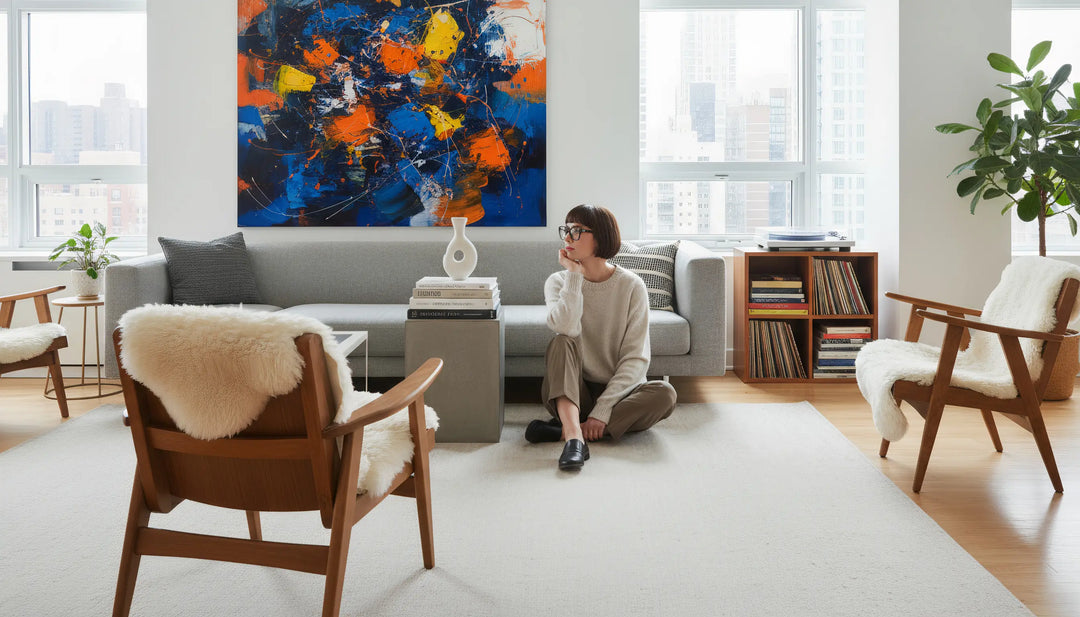Key Takeaways
- African art prioritizes symbolic meaning over realistic representation through deliberate abstraction
- Regional traditions include masks, textiles, sculptures, and pottery with deep spiritual significance
- Cultural symbols like Adinkra and Kente patterns convey complex philosophical concepts
- Artistic principles include dignity, luminosity, youthfulness, and hierarchical scaling
The art of Africa, despite its rich history spanning thousands of years, remains largely misunderstood in Western contexts. African visual culture encompasses striking differences from Western conceptions of beauty, spirituality, and social position. This comprehensive guide explores the core concepts that define traditional African artistic expression across the sub-Saharan continent.

Regional diversity in African artistic traditions across the continent
Abstract Human Figures: Beyond Surface Reality
One of African art's most distinguishing features is its preference for abstraction over naturalistic representation. This approach stems from the artist's desire to convey deeper concepts rather than merely depict subjects. According to Britannica, African artists deliberately alter and reinterpret human and animal forms to communicate spiritual and ethical messages.

Abstract wooden sculpture demonstrating spiritual symbolism over realism
Why Abstraction Matters
African abstraction is not a limitation but a deliberate artistic choice. Exaggerated proportions—especially enlarged heads—symbolize intelligence and wisdom in leadership figures. When artists depict women with prominent curves, they emphasize fertility and nurturing qualities rather than physical accuracy.
Regional Artistic Traditions
West African Masks and Ceremonies
Traditional African masks serve as powerful spiritual intermediaries in West African cultures. The Yoruba people of Nigeria create intricate masks blending human and animal forms, while the Dan people's masks feature elongated faces with geometric patterns emphasizing symmetry and balance.
Textiles as Cultural Messengers
Kente cloth from Ghana represents one of Africa's most sophisticated textile traditions. Woven in narrow strips and sewn together, each pattern carries specific meanings tied to philosophy, values, and historical events. The related Adinkra cloth tradition uses stamped symbols to convey proverbs and cultural wisdom.
What Textiles Express
- Identity and Status: Kente patterns indicate social rank, achievements, and clan affiliations
- Philosophical Messages: Adinkra symbols represent concepts like unity, strength, and wisdom
- Ceremonial Significance: Different cloths are worn for specific occasions, from funerals to celebrations
Dignity & Self-Composure: The Ideal of Inner Calm
African art consistently depicts figures representing the ideal of inner tranquility. Traditional sculptures show serious-looking subjects who neither smile nor frown, embodying emotional control and social confidence. This aesthetic choice reflects cultural values where maintaining composure indicates wisdom and high status.

Family group sculpture demonstrating hierarchical scaling and dignified poses
Figures typically face forward with straight spines and level heads, indicating official rank and authority. Sideways positioning or tilted heads often signify lower social status or youth, while stillness conveys grandeur and permanence over the transient nature of physical labor.
Youthfulness: The Eternal Prime of Life
African artists consistently present human subjects in pristine states of youth and health. This choice reflects cultural associations between youthful appearance and positive attributes like fertility, vigor, productivity, and work capacity. Even elderly subjects maintain youthful faces, with artists using symbolic elements like beards to indicate age while preserving the vitality of youth.

Youthful figures embodying vitality and life force in traditional painting
Cultural Insight: Even infants who pass away are sometimes depicted as robust adults, representing the full potential they were destined to achieve. This practice emphasizes the spiritual belief in eternal vitality rather than physical mortality.
Luminosity: The Moral Glow
The concept of luminosity appears frequently in African sculptures through polished, glossy surfaces representing healthy, glowing skin. According to traditional beliefs, a person's brightness indicates their moral character—the inner light of good character manifests as physical radiance.

Polished bronze surface demonstrating the concept of moral luminosity
Conversely, rough or dull surfaces deliberately convey moral failings or spiritual darkness. This artistic principle connects physical appearance with spiritual condition, creating a visual language of ethics and character assessment.
Hierarchical Scaling: Size as Social Commentary
African art employs hierarchical sizing—depicting figures at different scales based on social importance rather than physical reality. The largest figure in any group represents the most influential person, while smaller figures indicate lower status. This principle, known as hieratic scaling, appears across various African cultures as a visual method of social organization.
Understanding Scale in Context
Children and infants represent obvious exceptions to hierarchical scaling—their small size reflects youth and social immaturity rather than low status. The system primarily applies to adult figures where size directly correlates with authority, wealth, and social influence.
Exploring Africa's Artistic Diversity
Central African Sculptural Traditions
Central African art from regions like the Democratic Republic of Congo showcases distinct characteristics including heart-shaped faces curved inward with circular and dot patterns. The Kuba people create intricate masks incorporating raffia, beads, shells, and feathers in stunning visual compositions.
Eastern African Artistic Expression
East African traditions include the Konso people's wooden tomb posts and the Swahili coast's wood carvings and metalworking. The region's artistic heritage reflects cultural exchanges between Africa, Arabia, and India over the past millennium.
Contemporary Relevance
These traditional principles continue influencing contemporary African artists and global art movements. Modern museums worldwide recognize African art's profound impact on movements like Cubism and Expressionism, while contemporary African artists blend traditional elements with modern techniques.
Discover African Art Prints for Your Space
Bring the power and beauty of African artistic traditions into your home with our carefully curated collection of art prints celebrating African culture and heritage.
Connect with African Heritage
Understanding these fundamental concepts opens a window into Africa's rich cultural heritage and artistic philosophy. Each piece of traditional African art serves as both aesthetic expression and cultural communication, carrying forward centuries of wisdom, belief, and social organization.
Explore Further
Dive deeper into African artistic traditions by visiting renowned collections at institutions like the Metropolitan Museum of Art or exploring scholarly resources through Encyclopedia Britannica.
Whether you're drawn to the symbolic power of masks, the philosophical depth of textile patterns, or the spiritual significance of sculptural forms, African art offers profound insights into human creativity and cultural expression. By understanding these key concepts, we can better appreciate the sophisticated artistic traditions that continue to influence and inspire global culture today.










